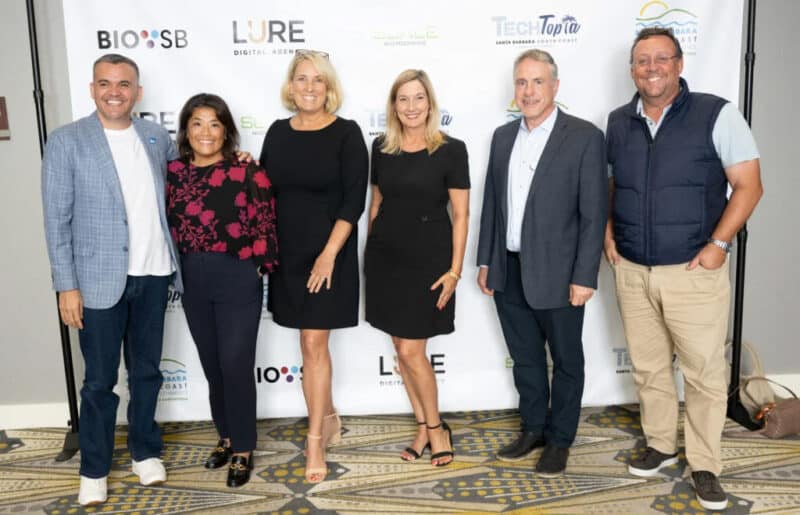
Walking through UC Santa Barbara’s campus, one wouldn’t realize that inside the very buildings they pass by, students and entrepreneurs are inside labs making diamonds and microchips and analyzing data inside a digital microscope.
On Thursday, dozens of people toured the AlloSphere, CNSI Innovation Lab, Quantum Foundry and Nanofabrication Facility at UCSB as part of TechTopia, an event hosted by the Santa Barbara South Coast Chamber of Commerce.
The event highlighted the South Coast’s technology and manufacturing industries and how they connect with local students for career opportunities.
The tour started in the Nanofabrication Facility, better known as NanoFab, which gives startups, big businesses and innovators a space to make microchips for any product they need.
Demis John explained that once you learn how to make one microchip, you can make any kind of microchip, with the right equipment. The lab has more than $60 million in equipment and is funded by the hourly fee that users pay to work in the lab.
Inside Elings Hall is the AlloSphere, a three-story metal sphere in an echo-free chamber. It’s a large digital microscope connected to a super computer that allows researchers to be completely immersed in their data.
JoAnn Kuchera-Morin, chief designer of the facility, directs research groups that use the AlloSphere to bring visualization to data. Researchers can immerse themselves inside a human brain, atoms and outer space.
“What we do is we do scientific visualization of complex data. We bring that data to human scale and also make beautiful art out of that data, which is our mandate as media artists,” Kuchera-Morin said.
Similar technology was used by Kuchera-Morin’s former students to create the Sphere in Las Vegas.
The AlloSphere will be showing off climate research in the next few months as part of the 2024 Getty Pacific Standard Time Art Biennial, which will include 70 exhibits across Southern California that combine art and science.
The California NanoSystems Institute Innovation Workshop allows users to build and test prototypes created using the lab’s 3-D printing, laser cutter and wordworking equipment.
Brian Dincau, lab manager, said they spend most of their time teaching novice users how to use the equipment to make their own designs.
“The biggest problem is if you don’t know how to use a 3-D printer, you’re going to design things that can’t be 3-D printed. If you don’t know how to use a laser cutter, you’re going to ask us to laser cut something that doesn’t make sense,” Dincau said. “I really want to focus on bringing people in, get their hands on the tools to help them understand the creation process.”
After the tour of the labs, groups were invited to hear from Ben Werner, the chamber’s workforce development program lead, about efforts to connect education to industry.
Werner said their industry internship program helped build the bridge between companies and students wanting to learn about local industries.
“I would argue that there’s a strong correlation between the performance, the success, the resilience, the agility of the company, and the culture of the company in terms of its deep integration of teaching and learning,” Werner said. “I would argue that the presence of an internship program is a good litmus test for that culture.”
Curvature and PseudolithIC representatives discuss the benefits of their summer internship programs at TechTopia. Giana Magnoli / Noozhawk photo
Angel Farlas Hidalgo said his internship at PseudolithIC gave him a chance to learn and excel in new skills and experience working in an industry than he would have gotten in a classroom.
“It’s just nice to know that I don’t have to leave where I live to be able to find a nice job that I will enjoy every single day,” Hidalgo said.
